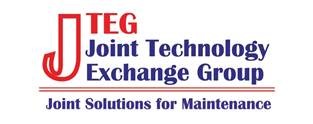
Forum documents:
[listyofiles folder=”wp-content/gallery/ColdSpray” options=”table,icon, date” sort=”date”]
On 7 January, 2014, the Joint Technology Exchange Group (JTEG), in coordination with the DoD’s Cold Spray Action Team (CSAT) and the National Center for Manufacturing Sciences (NCMS), hosted a three hour virtual forum on “Cold Spray Technologies and Processes Used for Repair”. The purpose of the forum was to explore the collaborative roles the JTEG and CSAT have in promoting cold spray repair, and to present several Cold Spray repair technology projects. The presentations, along with questions and answers, were conducted through Defense Connect Online (DCO). Over 60 participants from across DoD and industry joined in the forum. Questions were sent through DCO and answered by the presenters during the forum.
Cold spray is used to form corrosion and wear resistant coatings, and can also be used to provide dimensional restoration and a means to repair worn and/or corroded parts fabricated from a variety of materials including aluminum, titanium, magnesium and steel. CSAT is a forum to exchange ideas and collaborate for the purpose of implementing and transitioning cold spray technology. The annual CSAT meeting will be held on June 18-19 at the Worcester Polytechnic Institute (WPI).
Cold Spray efforts presented included Army Research Labs (ARL) efforts to repair items in the storage, analysis, failure evaluation and reclamation (SAFR) warehouse, and a cold spray technology for aircraft component repair project. NAVAIR presented several H-60 and H53 applications and a project where NAVAIR is collaborating with the Royal Australian Navy on developing a field deployable robotic cold spray system for mobile repair. The Air Force briefed projects on magnesium and aluminum housing repairs, and a portable hand held high pressure cold spray system. Penn State/ARL presented efforts on cold spray coatings with solid lubricants, plate inspection of cold spray repaired plates, and a cost model for calculating cost and spray efficiency.
Upon completion of the presentations, the JTEG and CSAT members enthusiastically agreed to continue their collaboration and partnership, and are looking forward to implementing more joint/holistic actions to drive cold spray development and applications forward.
